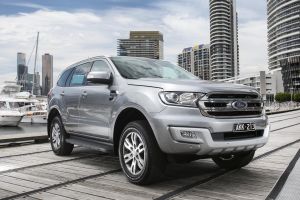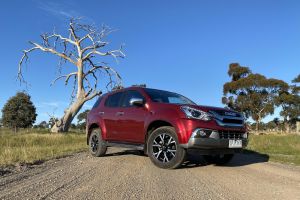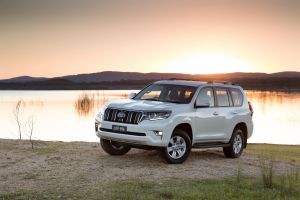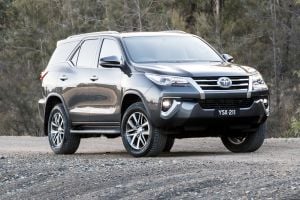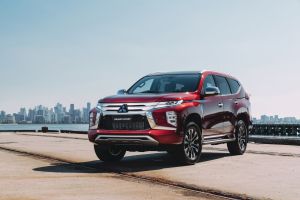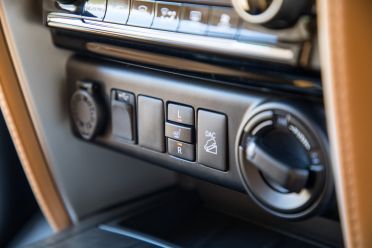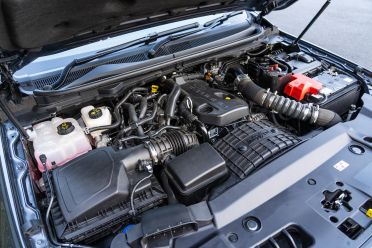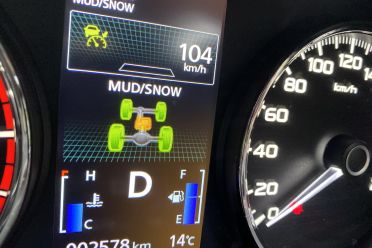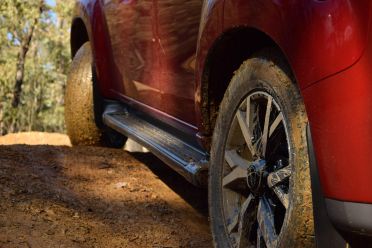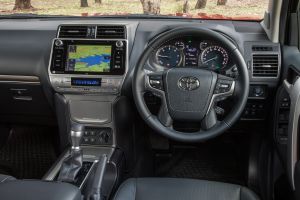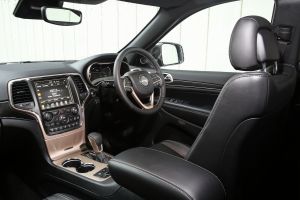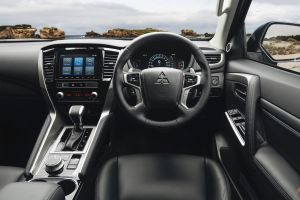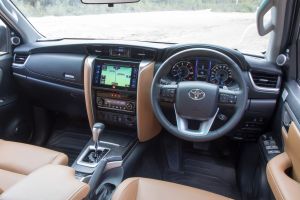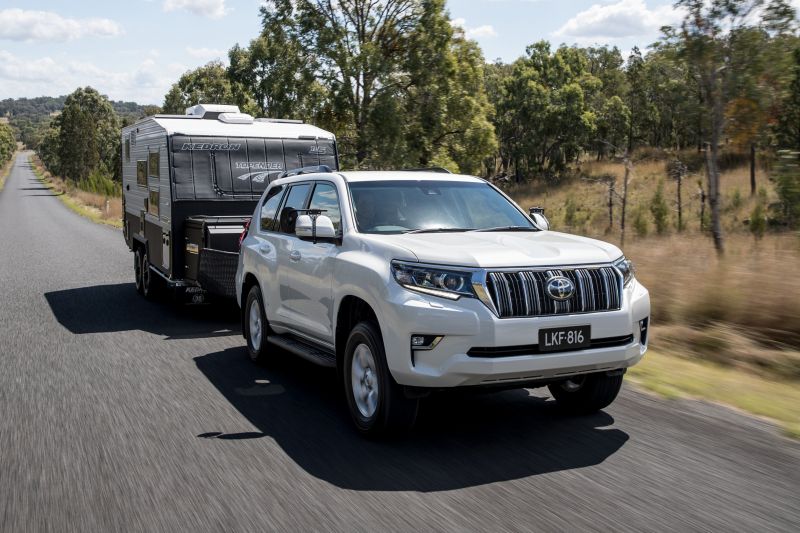Toyota has just given its top-selling Prado an update, headlined by a more powerful diesel engine, more active safety features, and a bigger touchscreen.
With that in mind, it’s worth putting it head-to-head with its chief competitors. We’re doing it in lieu of a conventional comparison test, which we’ll do once Melbourne’s COVID-19 restrictions abate.
We’ve selected the mid-level Prado GXL spec, which is particularly popular among grey nomads and families. But there are also workhorse GX, and more luxurious VX and Kakadu grades to opt for. The latter pair sit in a different pricing stratosphere.
Our chosen competitors are the mid-range Ford Everest Trend with the ‘BiTurbo’ diesel engine, the range-topping Isuzu MU-X LS-T, the base Jeep Grand Cherokee Night Eagle, the flagship Mitsubishi Pajero Sport Exceed, and Toyota’s other recently-updated 4×4, the Fortuner, in range-topping Crusade guise.
We’ve chosen these because their manufacturer list prices are closest to the Prado GXL’s within their respective line-ups.
Pricing
The Prado GLX’s list price is $66,640 before on-road costs. If you want the premium interior package with leather-accented seats that are heated, powered, and cooled for front occupants, and heated in the second row, it’s a further $3470.
How does that compare to its competitors? The Grand Cherokee Night Eagle comes in at $65,950 before on-roads (list), the Everest Trend $62,390 list, the Fortuner Crusade $61,410 list, the Pajero Sport Exceed $57,190 list, and the MU-X $57,400 list.
I did consider including the range-topping Everest Titanium ($73,190) but opted to go for the Trend since it sits closer to the Prado GXL. The Everest Titanium tackles the $76,380 before on-roads Prado VX.
There are more variances in drive-away prices. For instance Isuzu is advertising the LS-T MU-X at $54,990 on the road, Mitsubishi is charging $59,990 drive-away for the top Pajero Sport, and Ford is subsiding drive-away deals on the Everest Trend of $63,490.
- Isuzu MU-X LS-T: $57,400 (currently $54,990 drive-away)
- Mitsubishi Pajero Sport Exceed: $57,190 ($59,990 drive-away)
- Toyota Fortuner Crusade: $61,140
- Ford Everest Trend: $62,390 ($63,490 drive-away)
- Jeep Grand Cherokee Night Eagle: $65,950
- Toyota Prado GXL: $66,540
Dimensions
The Toyota Prado is the longest car here at 4995mm, compared to the Everest (4903mm), Grand Cherokee (4828mm), MU-X and Pajero Sport (each 4825mm), and Fortuner (4795mm).
The Prado is also the tallest at 1890mm, ahead of the MU-X (1860mm), Everest (1837mm), Fortuner, Pajero Sport (1835mm), and the Jeep at the rear (1802mm).
The Jeep is actually widest though, at 1943mm. Next in order it’s Prado (1885mm), Everest (1869mm), MU-X (1860mm), Fortuner (1855mm), and Pajero Sport (1815mm).
Drivetrains and towing
The vehicle here with the most impressive outputs is the Grand Cherokee. It’s the only six-cylinder here, and makes 184kW of power at 4000rpm and 570Nm of torque from 2000rpm.
The smallest-displacement engine here belongs to the Ford Everest, yet it’s the second most-powerful. The 2.0-litre four-cylinder diesel has sequential turbochargers and makes 157kW and 500Nm, the latter from 1750rpm.
Toyota’s uprated 2.8-litre four-cylinder diesel engine used in both the Prado and its Fortuner cousin now makes 150kW and 500Nm (from 1600rpm), which is 20kW/50Nm more than before thanks to a bigger blower.
The Pajero Sport’s 2.4-litre four-cylinder diesel makes 133kW and 430Nm (from 2500rpm). It sits just ahead of the MU-X’s 3.0-litre four-cylinder, which trots out 130kW and 430Nm (from 2000rpm).
The only vehicle here available with petrol power is the Jeep, which in this spec level comes with a 3.6-litre V6 making 213kW/347Nm. The Ford comes with a second engine choice, a 3.2-litre five-cylinder diesel, making 147kW and 470Nm. Both are cheaper than the versions viewed here.
All come with automatic transmissions as standard. The automatic in the Isuzu and two Toyotas has six speeds, the Mitsubishi and Jeep use eight-speed units, and the Ford’s has 10 speeds, allowing its engineers to stack each ratio closer together.
Claimed combined-cycle fuel consumption is lowest in the Ford, at 7.0 litres per 100km. The Jeep’s claim is an impressive 7.5L/100km, ahead of the Fortuner at 7.6L/100km, the MU-X and Prado at 7.9L/100km, and the Pajero Sport at 8L/100km.
The Isuzu and Mitsubishi have the smallest tanks, at 65L and 68L respectively. The Fortuner and Everest each have 80L tanks, the Grand Cherokee 93L, and the Prado a massive 150L on account of its secondary 63L sub-tank. If you’d like your spare tyre mounted beneath the car rather than on the tailgate, you need to delete said sub-tank.
It’s clear why the Prado is so beloved by grey nomads and regional mine operators alike.
The fuel-use figures are interesting since the Mitsubishi is actually the lightest vehicle here at 2110kg (kerb). The Fortuner weighs 2135kg, the MU-X 2157kg, the Jeep 2267kg (tare), the Prado 2325kg, and the porky Ford comes in heaviest at 2387kg.
The minimum braked-trailer towing capacity here is 3-tonnes (Prado and MU-X), compared to 3.1-tonnes for the Fortuner, Pajero Sport and Everest. The Jeep’s 3.5-tonne claim tops the charts.
Check the gross combination mass (GCM) in the table above, and deduct the gross vehicle mass (GVM) to see how much you can tow at payload.
Suspension and 4×4
All of these SUVs are designed to be off-road capable. The Fortuner and MU-X have part-time four-wheel drive setups (4H on-the-fly), whereas the other four all run full-time 4×4 systems (the Pajero Sport has a 2H mode, but also an open 4H mode made for road use).
All six have low-range gearing, and all bar the Isuzu have a factory locking diff at the rear to reduce free-wheeling if one wheel is airborne.
Each uses independent front suspension, and the rear axles are controlled by coil springs with multiple linkages. Higher-end versions of the Prado and Grand Cherokee come with cushy air suspension.
You can see a breakdown of fording depths, and various off-road angles below.
Features and tech
Features you can expect include alloy wheels with a full-size spare, LED headlights (bi-xenons on the Jeep), proximity key fob, a touchscreen, satellite-navigation, climate control, and a reversing camera.
Luxuries available on all (optional on Prado and standard on the rear) are powered leather seats.
See the table below for a breakdown of common specs.
Safety features
All get the maximum five-star ANCAP crash rating, though only the Fortuner is rated against 2019 protocols.
All have dual front, front-side, and curtain airbags. Only the Isuzu lacks autonomous emergency braking (AEB). The only car here with AEB, blind-spot monitoring (BLIS), lane-keeping aid, rear cross-traffic alert (RCTA) and active cruise control is the Pajero Sport.
See the breakdown in the table below.
Warranty and servicing
See the table below for comparative data. Service prices were taken from the capped-servicing calculators on each brand’s website.

